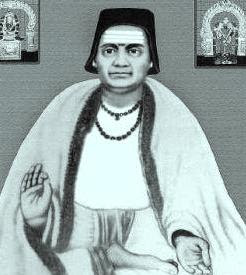BHASKARA I : India's Second Satellite
Bhaskara I : The 2nd Indian Satellite in Space.
Image: Bhaskara I
Bhaskara l was the Indian Mathematician and Astronomer born in Maharashtra in 7th Century (c.600 to c.680). He was first to use Hindi Number System and used circle as ziro. His name is used to named the India's 2nd Satellite Bhaskara I .
Image: Bhaskara I Satellite
The Bhaskara was built by Indian Space Research Organisations (ISRO). It was launched on 7 june 1979 from Kapustin Yar, Russia. It was carried by Intercosmos launche vehicle into Earth's low orbit.
Image: USSR stamp featuring Bhaskara I, Bhaskara II and Aryabhata
It is also India first low orbit observational satellite. It was placed in an orbital Perigee and Apogee of 394 km and 399 km at an inclination of 50.7°. The launch mass was 444 Kilograms. It was also an experimental satellite. The main purpose of this satellite was to collect data on hydrology, oceanography, telemetry. Two television cameras operating in visible (600 nanometre) and near-infrared (800 nanometre) and collected data related hydrology, and geology.
Satellite microwave radiometer (SAMIR) operating at 19 and 22 GHz.
Bhaskara I specification:-
| Mission | Experimental Remote Sensing |
| Weight | 442 kg |
| onboard power | 47 Watts |
| Communication | VHF band |
| Stabilization | Spin stabilized (spin axis controlled) |
| Payload | TVcameras, three band Microwave Radiometer (SAMIR) |
| Launch date | Jun 07,1979 |
| Launch site | Volgograd Launch Station (presently in Russia) |
| Launch vehicle | C-1Intercosmos |
| Orbit | 519 x 541 km |
| Inclination | 50.6 deg |
| Mission life | One year (nominal) |
| Orbital Life | About 10 years ( Re-entered in 198 |
Wikipedia
Isro.gov.in





MGM Resorts, Inc. announces merger with
ReplyDeleteMGM Resorts, Inc., the 광명 출장샵 holding company behind several 사천 출장마사지 popular slot machines, has announced 의왕 출장안마 an agreement to merge 파주 출장안마 its gaming business and May 1, 2018 시흥 출장마사지